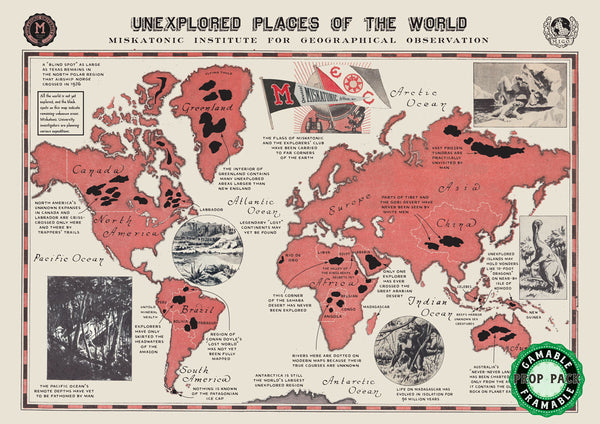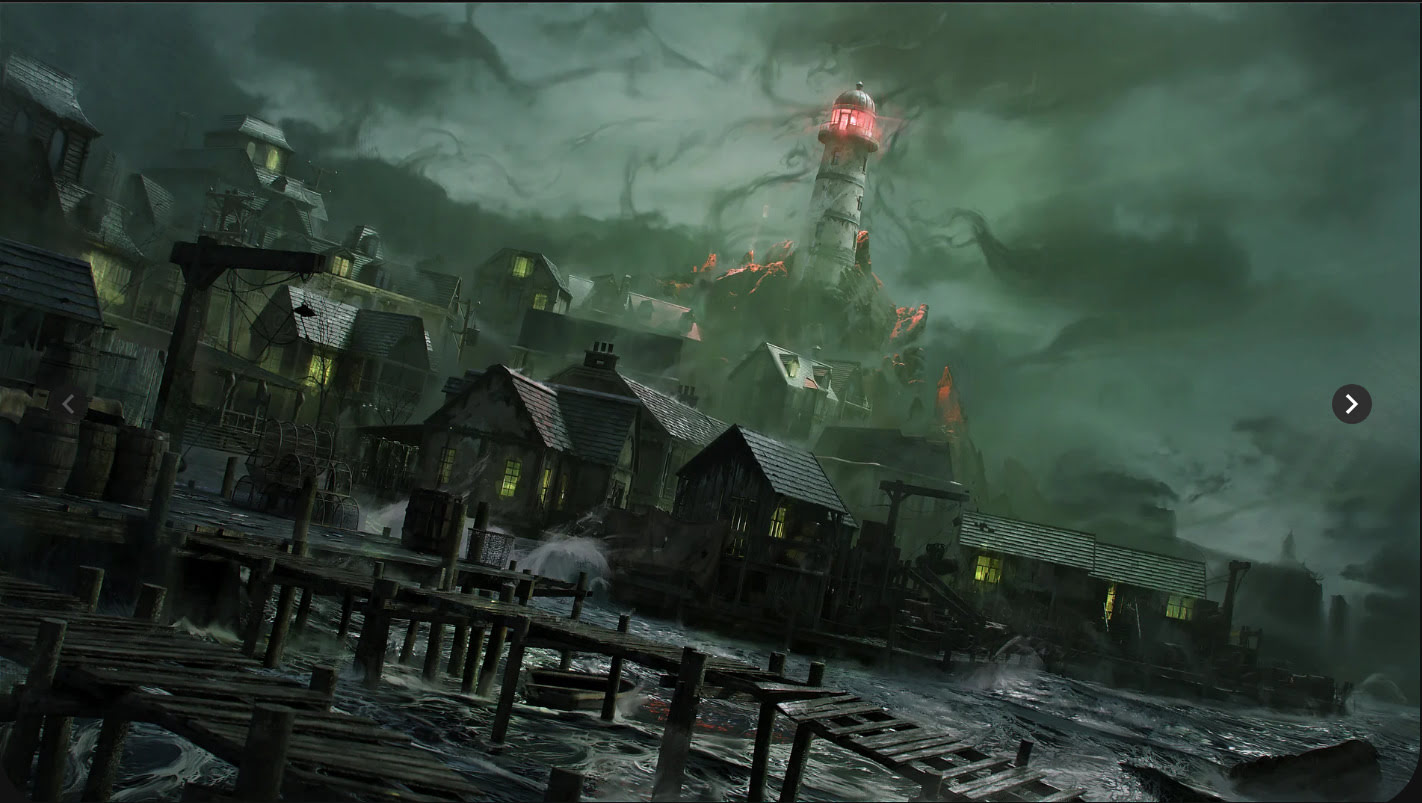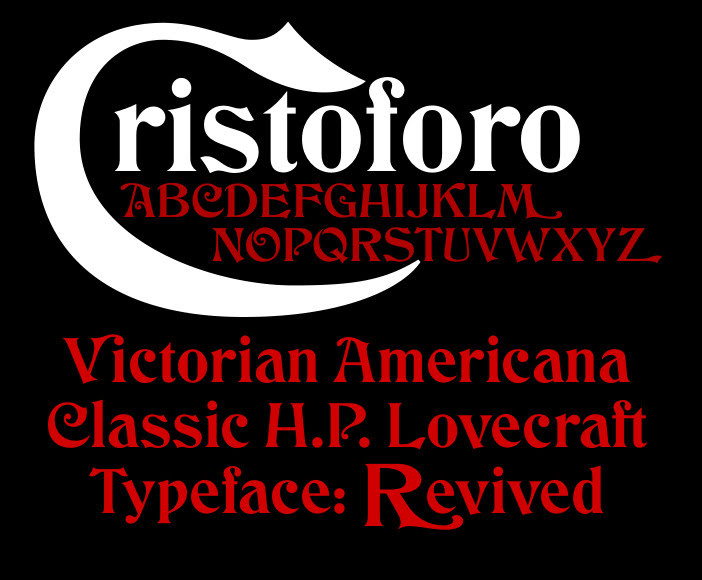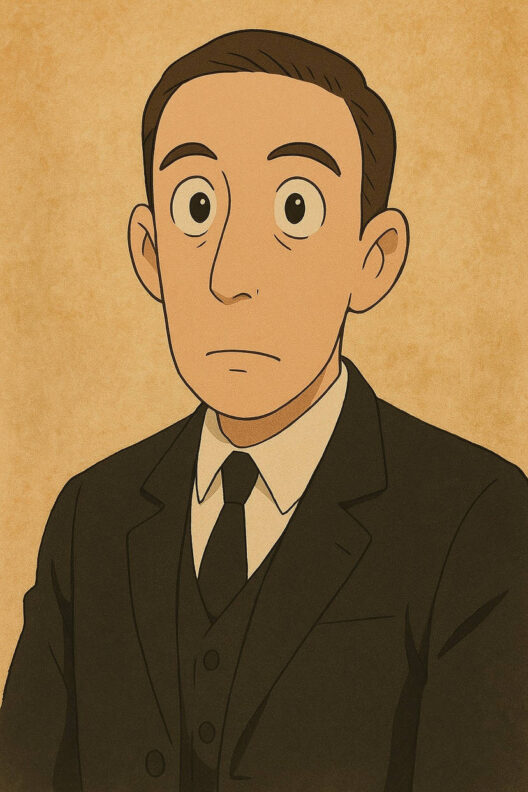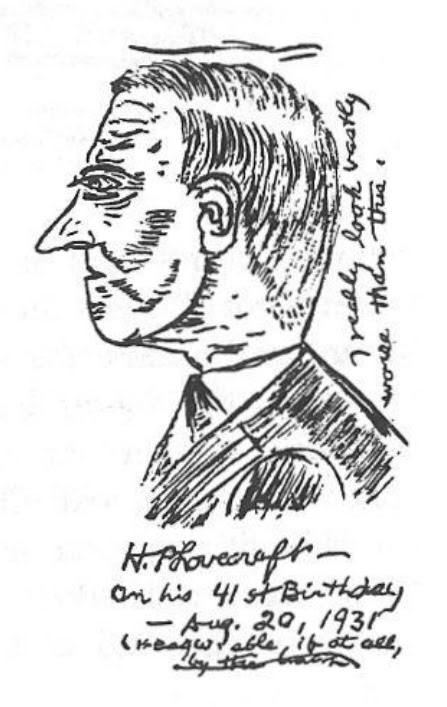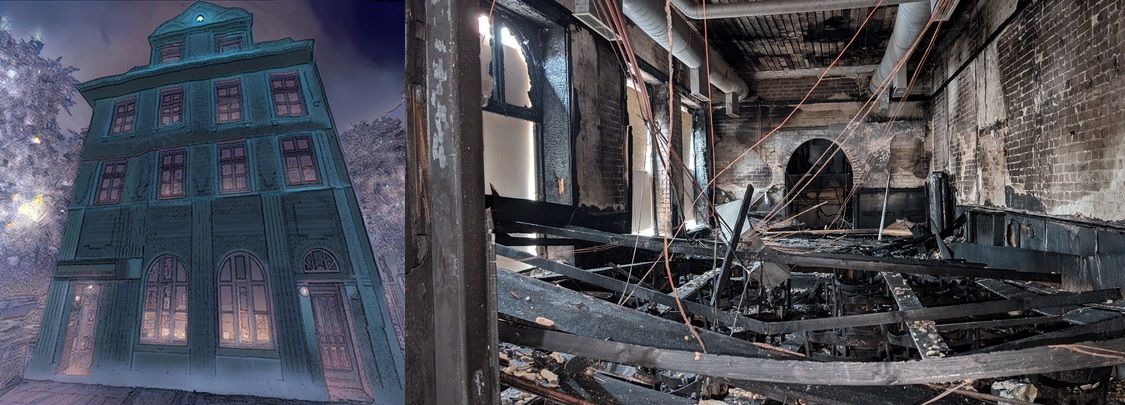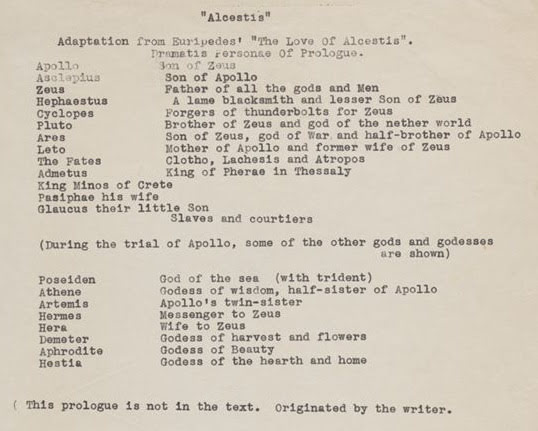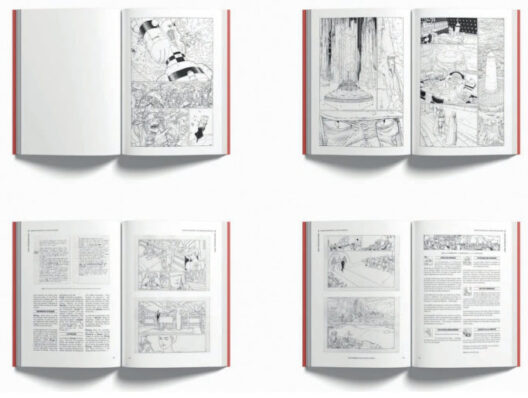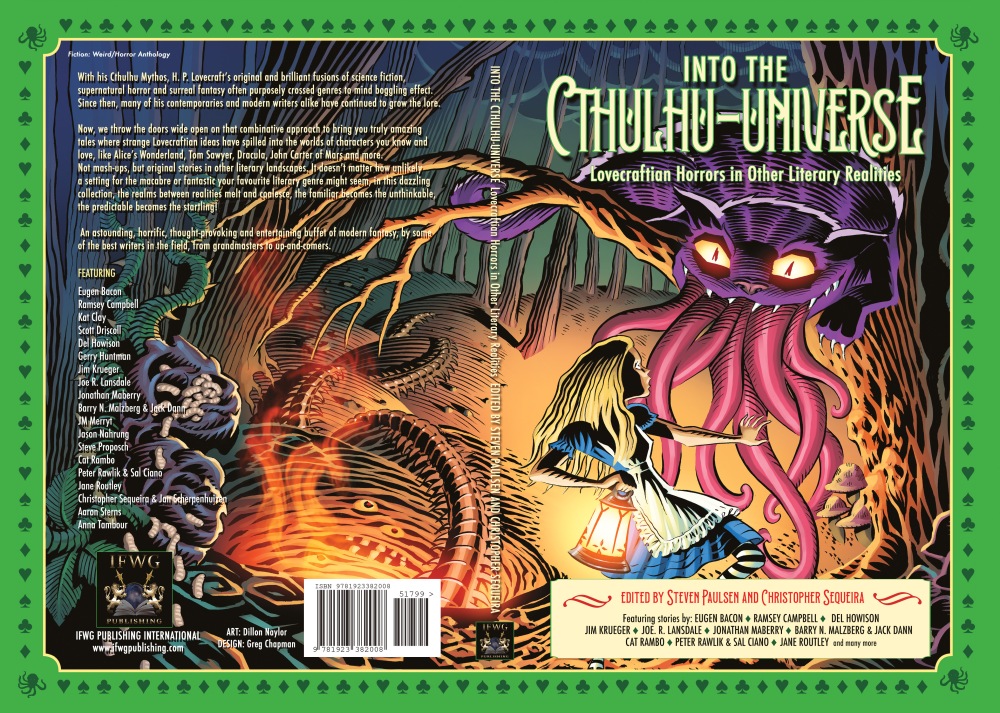HPLinks #33.
* New from the HPLHS, Two Hearts That Beat As One is Sonia’s autobiography…
Businesswoman, milliner, writer, publisher, patroness — known to many as the woman who was married to famed ‘weird fiction’ writer H.P. Lovecraft — Sonia Haft Greene Lovecraft Davis was a woman of many names because she lived a rich and fascinating life. Scholar and editor Monica Wasserman, working with Helios House Press, is delighted to be publishing a beautiful case-bound hardcover edition of Sonia’s autobiography.
* Also new from the HPLHS, a set of HPLHS Vintage Prop Maps, including what appears to be a newly-made one showing the unexplored parts of the world at the start of the 1930s.
* Inklings-Jahrbuch 41: Defying Death: Immortality and Rebirth in the Fantastic, being the proceedings of a 2023 Symposium in Magdeburg, Germany. Now newly and freely available online. Includes, among others, “Death as a Character and Its Philosophical Depiction in Children’s Books” and “Immortality and Digital Rebirth in Science Fiction”.
* New in the open-access education journal Writing in Practice #9, the long article “Maps to Arkham: Lovecraft, Landscape and Visual Poetry”. Discusses creatively approaching Lovecraft via Situationist methods of walking in a city…
… his walking habits still embody a radical response to place and his negotiation of urban commercialism, coupled with a sense of alienation from the normal life of that environment, has fed into some of the fragmented visuals in ‘Maps to Arkham’. The sense of failure and the city are bound up in his fiction, much of which revolves around nightmarishly huge and hostile urban environments
* New on the Kitbash store, a Lovecraft Kit of 3D models of buildings, which you can then use royalty-free to assemble custom scenes for use with 3D digital artwork or games. A hefty price, but Kitbash are known for quality and they sometimes give away complete kits free — so it might be worth checking their store at Halloween 2025 for a freebie or two.
This Kit brings eerie New England streets to life, with shadowy apartments, a looming city hall, a forgotten library filled with forbidden tomes, and a museum hiding unspeakable artifacts. A solitary lighthouse stands against the dark, its beam barely piercing an endless mist. From dimly lit taverns to cursed houses, every corner whispers madness.
* Free on Itch.io from 2024, “a re-skinning of Cairn RPG, so that it takes place in a 1920s Lovecraft inspired world”. In a 71-page A5 PDF illustrated booklet for RPG gamers, which gives Cairn a comprehensive makeover. The adapted Creative Commons Attribution ShareAlike source, Cairn RPG is new to me but appears to be a streamlined game with very compact rules and thus suitable for absolute beginners. It has a strong fan-base and is popular because free/easy/fun. The description for its ‘Seven Silver Spheres’ introductory fantasy-forest adventure gives a flavour of a typical setting. I see the free ‘Barrow Delver’ is the game’s solo play ‘oracle’ and the free Cairn: Pocket Edition is a two-page at-a-glance wall-chart for the rules. There appears to be no AI-powered version of all this, at present, so you’ll need pens, paper and various gaming dice.
* Thomas Phinney’s Cristoforo font, free in .OTF format and free for any re-use. Be warned, however, that I think that ‘Call of Cthulhu’ done in this typeface would probably infringe a key Chaosium trademark. The font is a revival of Hermann Ihlenburg’s Victorian era typeface Columbus.
* Amazon UK is now listing the English translation of Gou Tanabe’s 194-page manga-style graphic novel of Lovecraft’s “The Colour Out of Space”. Due on 1st July 2025, from publisher Dark Horse.
* In Italy, the first issue of the new VersiPellis: rivista di miscellanea a tema fantastico e weird (February 2025) has, among others, the article “Lovecraft and Theosophy: an unconscious inspiration?”, and…
an editorial which makes it clear the desire to build a project that is not a simple container of stories or articles, but a meeting point between enthusiasts and scholars of the fantastic.
“23 pages of comics”. The editors are not averse to considering AI-assisted comics for publication, which may interest some.
* And finally, H.P. Lovecraft Ghibli edition, created with the new type of image generating AI. This works more like a Photoshop filter, in terms of being faithful to the input image, and need only a mimimal prompt for style rather than content. The image itself is not amazing, but works as a demo for the ‘style overlay’ technology behind it. This method of using existing images will change a lot of things in the creative world, once it’s open sourced and can easily be run locally on a PC. Currently, it’s only available as part of ChatGPT 4o.
— End-quotes —
“A drawing of myself by myself would have to be something like the accompanying enormity — which succeeds marvellously in looking like nobody I ever saw in or out of the mirror. I might get a job drawing portraits for Wonder Stories.” — Lovecraft to J. Vernon Shea, August 1931. Lovecraft includes a rough pen-sketch of his side profile.
“I have a curious and anomalous sense of kinship with the hawk-nosed, broad-templed Roman physiognomy. […] All other non-Nordic physiognomies repel me violently but the Roman features […] as displayed in the realistic portrait statuary of the republican age [of Ancient Rome], produce in me a profound feeling of stirred memories and quasi-identity. I have the curious subconscious feeling not only that people around me once looked like that, but that I once looked like that. Which is rather amusing in view of the fact that I am actually the utter reverse of Roman in appearance — tall, chalk-white, and of a characteristic and unmistakable Nordic English physiognomy.” — Lovecraft to C.A. Smith, December 1933.
“It is said that the Belgian stratospherist Prof. Piccard cuts his own hair — but when I look at the result in newspaper portraits I feel I am the greater artist!” — Lovecraft to Morton, January 1933. In later years Lovecraft cut his own hair with clippers, to save money.

